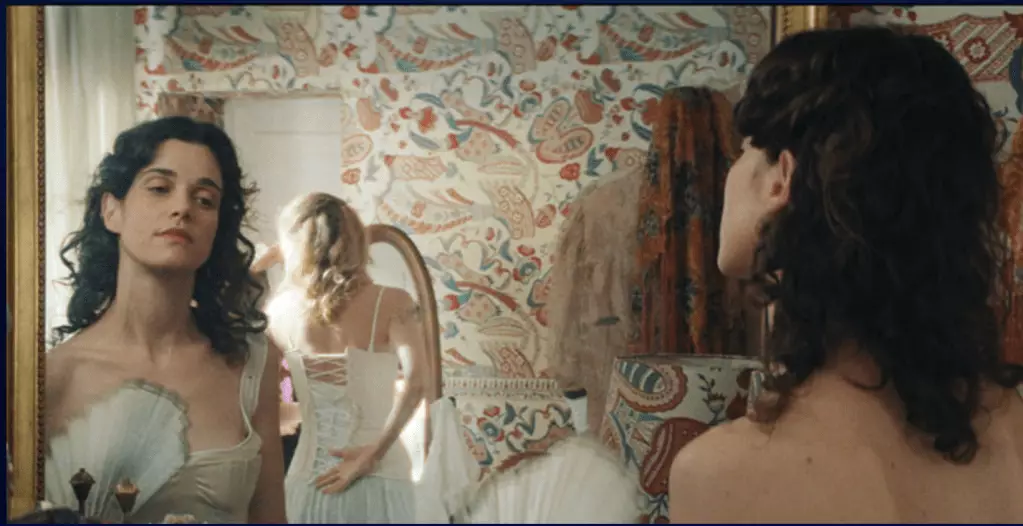In an age where flashy blockbusters and CGI spectacles capture the majority of the audience’s attention, indie films are carving out their own niche, showcasing not just creativity but resilience. The latest offerings remind us that the spirit of independent cinema not only survives but thrives amid the overwhelming presence of corporate film studios. For film enthusiasts looking for something with depth and authenticity, indie films exemplify a refreshing departure from mainstream formulaic storytelling.
One such film, Jane Austen Wrecked My Life, has not only taken box offices by storm but also ingrained itself in the hearts of viewers. With its stunning debut of $291,000 across 61 screens, it confirms that Jane Austen’s timeless allure remains undiminished, suggesting that audiences are yearning for narratives that resonate on deeper emotional levels. This film isn’t just another adaptation; it’s a commentary on modern relationships through the lens of Austen’s keen observations, drawing parallels between her character’s struggles and those of today’s youth.
The Power of Nostalgia
Nostalgia plays a monumental role in the success of indie films like Jane Austen Wrecked My Life. This particular film taps into a collective yearning for connection and meaningful narrative in our chaotic, modern lives. Austen’s novels, which masterfully critique the societal norms of her time, find a reflective resonance today. The strong word-of-mouth buzz, evidenced by the movie’s 87% approval rating on Rotten Tomatoes, illustrates how audiences crave these nuanced portrayals of love and conflict, ones often lacking in bigger-budget productions driven by profit motives.
Indie cinema’s strength lies in its ability to innovate without the constraints imposed by heavy corporate oversight. This encourages filmmakers to take risks, exploring unique themes and character arcs that reflect both past and present struggles. As audiences flock to stories that provoke thought and stir emotions, indie films like Austen’s latest adaptation shine brighter on the screen.
A Diverse Cinematic Palette
Another refreshing aspect of the indie film landscape this summer is the burgeoning variety of content available. Take The Last Rodeo by Angel Studios, which captures the essence of human resilience and familial ties against the backdrop of a rodeo legend’s journey to redemption. With earnings of $5.26 million over the holiday weekend, the film embodies a captivating narrative that mirrors the struggles of many families today. At its heart is the story of self-sacrifice, urging viewers not only to root for the protagonist but to reflect upon their own familial relationships.
Then there’s Friendship, starring Tim Robinson and Paul Rudd, which taps into the all-too-relatable theme of friendships gone awry. Earning $4.6 million in its third week, this film caters to a segment of the audience that appreciates a comedic take on male relationships. The excellent word-of-mouth sales translate not just to box office success, but a societal conversation about the various dimensions of friendship, paving the way for a dialogue that extends beyond the screen.
The Indie Resurgence Amidst Corporate Overhead
The ongoing success of these indie films is not merely coincidental; it represents a conscious shift among audiences who are seeking authenticity over allure. In a cultural landscape dominated by cookie-cutter narratives that prioritize spectacle over substance, it’s empowering to witness indie films – the underdogs of the industry – receiving their due recognition. They encapsulate the heart of storytelling with their distinctive blend of humor, emotion, and social commentary.
However, the road ahead for indie cinema is inherently challenging. The juxtaposition of bold storytelling against the backdrop of the ever-looming financial interests of major studios serves as both a catalyst and a challenge for filmmakers. Many outstanding indie projects often struggle to find financing, distribution, and promotion, underscoring the need for a more supportive environment for independent artists in a marketplace largely skewed in favor of blockbuster appeal.
Therefore, as we rave about the successes of indie films during this summer weekend, it’s crucial to remain vigilant. Continued support for these films nurtures artistic growth and helps secure a future where stories that matter are not drowned out by commercial ambitions. Independent cinema is not merely a trend; it’s a vital component of our cultural fabric that deserves our encouragement, lively discourse, and, above all, our enthusiastic attendance.

